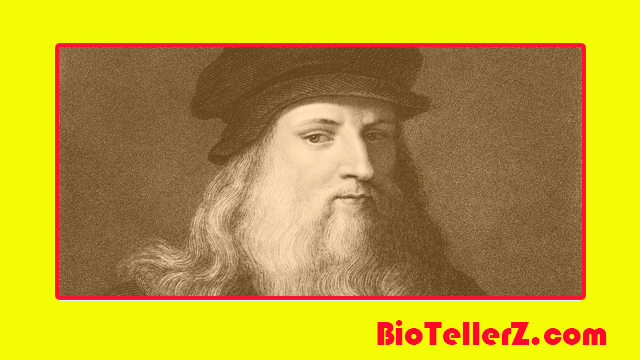Leonardo da Vinci, also known as “Leonardo from Vinci,” was an Italian painter, draftsman, sculptor, architect, and engineer.He was born on April 15, 1452, in Anchiano, close to Vinci, Republic of Florence, and died on May 2, 1519, in Cloux, now in France. Clos-Lucé], France), whose talent and intellect, perhaps more than those of any other person, embodied the ideal of the Renaissance humanist. His Last Supper (c. 1495–1488) and the Mona Lisa (c. Among the most well-known and significant paintings of the Renaissance are those from 1503–19. The scientific rigor and mechanical ingenuity he recorded in his notebooks were centuries ahead of their time.

Work and life
Early period: Florence
Leonardo’s parents had not yet wed when he was born. Ser Piero, his father, was a notary and a landowner in Florence, and Caterina, his mother, was a young peasant who soon wed an artist.Leonardo was raised on the family’s estate, where he received the same fundamental education as other young people at the time: reading, writing, and math. Once he had a working understanding of Latin, the primary language of traditional education, Leonardo did not begin to study it seriously until much later. In addition, he did not begin to apply himself to higher mathematics—advanced geometry and arithmetic—until he was thirty years old.
First Milanese period (1482–99)
The unfinished panel painting Adoration of the Magi for the monastery of San Donato a Scopeto and an altar piece for the St. The unfinished Bernard Chapel in the Palazzo della Signoria. Given that he abandoned both initiatives, it appears that his reasons for leaving Florence were more complex. The more formal, academic atmosphere of Milan may have appealed to Leonardo because it was in contrast to the rather sophisticated Neoplatonism that predominated in the Medici-era Florence. He was also undoubtedly drawn by the impressive court of Duke Ludovico Sforza and the worthwhile endeavors that awaited him there.
Second Florentine period (1500–08) of Leonardo da Vinci
Leonardo left Milan with mathematician Lucas Pacioli in late December 1499 or as late as January 1500, just after the French invaded Milan and won the battle. He first went to Mantua in February 1500, and then in March he went to Venice, where the Signoria (governing council) asked him for advice on how to stop a potential Turkish invasion of Friuli. Leonardo advised them to get ready to flood the dangerous area. After a protracted absence, he made his way back from Venice to Florence, where he was welcomed with praise and honored as a well-known native son. He was appointed an architectural expert on a committee looking into damage to the church of San Francesco al Monte’s foundation and structure that same year. According to Fra Pietro Nuvolaria, Isabella d’Este’s representative in Florence, Leonardo, a guest of the Servite order in the cloister of Santissima Annunziata, appears to have been focusing more on mathematics than painting. This is what she was told after trying in vain to acquire a painting by him.
Second Milanese period (1508–13)
Charles d’Amboise, the French governor of Milan, requested permission to send Leonardo to Milan in May 1506 from the Signoria in Florence. Leonardo was released by the Signoria, leaving the enormous Battle of Anghiari incomplete. As there is no other plausible explanation for Leonardo’s abandonment of this magnificent work, unsuccessful technical experiments with paints appear to have been what drove him to stop working on the mural. Leonardo traveled to Florence in the winter of 1507–1508 and assisted Giovanni Francesco Rustici in creating the bronze statues for the Florence Baptistery before relocating to Milan.
Last years (1513–19) of Leonardo da Vinci
Political occurrences in 1513, including the French’s brief expulsion from Milan, forced the 60-year-old Leonardo to relocate once more. He traveled to Rome at the end of the year with his students Melzi and Salai as well as two studio assistants in an effort to secure employment there through his patron Giuliano de’ Medici, the brother of the new pope, Leo X. In his residence, the Belvedere in the Vatican, Giuliano gave him a suite of rooms. He also provided Leonardo with a sizable monthly stipend, but no significant commissions were received in return. Leonardo stayed in Rome for three years during a period of intense artistic activity: Donato Bramante was constructing St. While Michelangelo struggled to finish the tomb of Pope Julius II and Raphael painted the final rooms of the pope’s new apartments, many younger artists, including Timoteo Viti and Sodoma, were also working. The aging master, who kept a low profile while working in his studio on mathematical studies and technical experiments or surveying ancient monuments as he walked through the city, is revealed by drafts of embittered letters that reveal his disappointment. There is no evidence of Leonardo’s relationships with any other artists in Rome, despite the fact that it appears that he spent time with Bramante, who passed away in 1514. Giuliano de’ Medici ordered a reclamation project in 1514, and a magnificently detailed map of the Pontine Marshes suggests that Leonardo was at least a consultant for the project. Additionally, he drew plans for a sizable home that would be constructed in Florence for the Medici family, who had retaken control of the city in 1512. The building, however, was never constructed.
